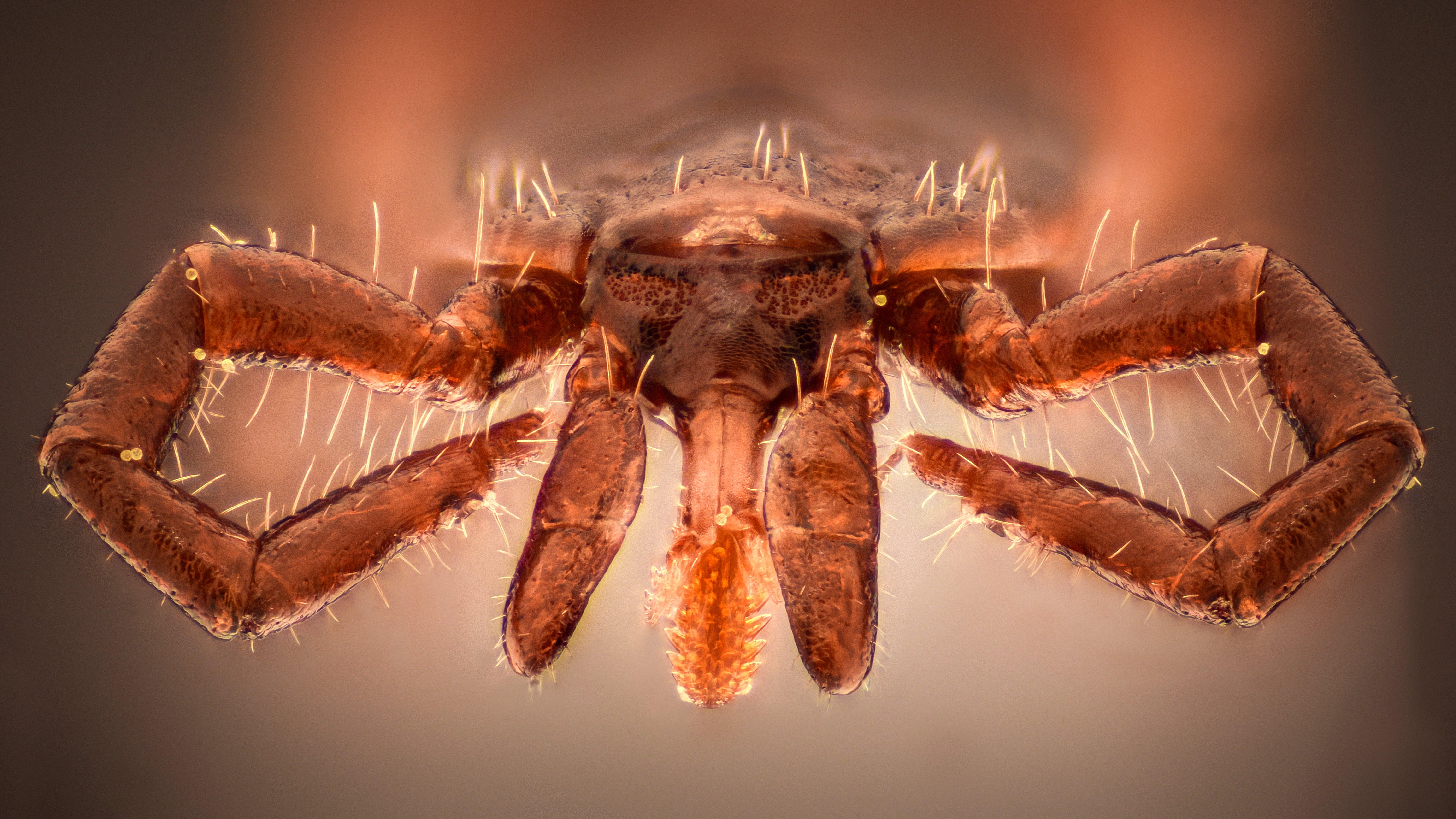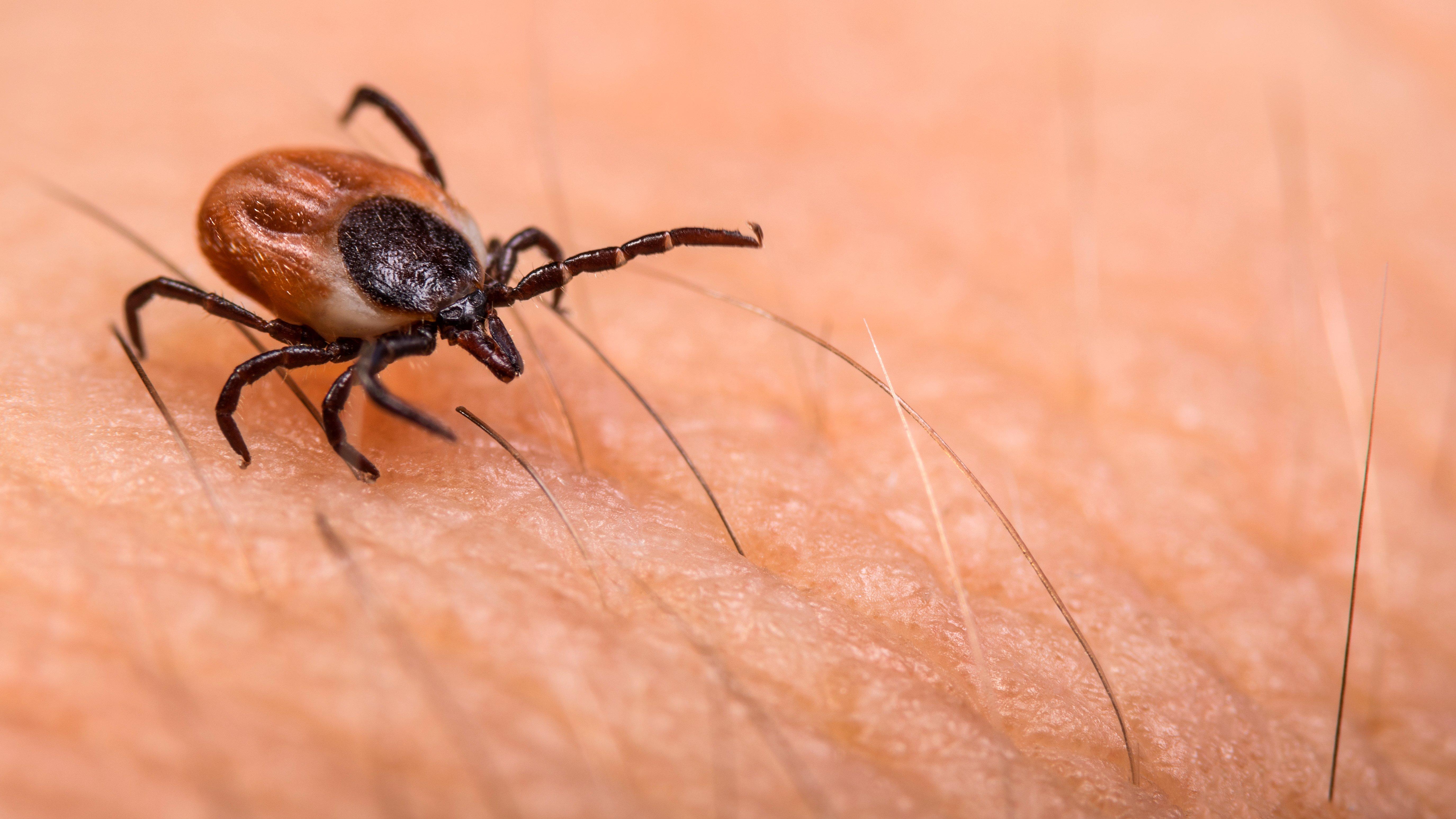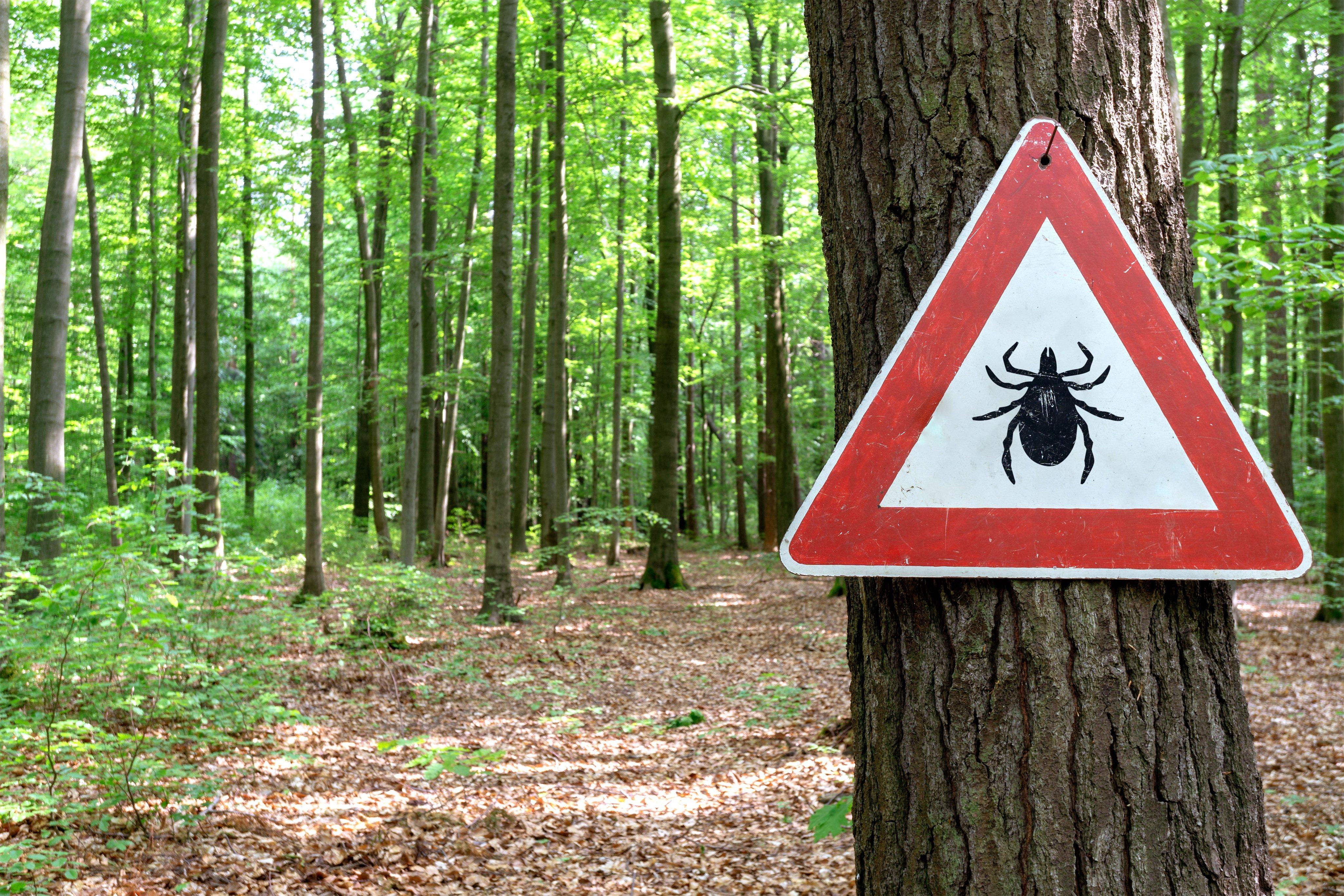If you’re going turkey hunting this spring, you’ll probably be in tick country. Here’s how to protect yourself
Always beware the strong, silent type. That’s especially true when referencing ticks, as they are incredibly silent but pack bites with potentially severe and long-lasting effects. Whether you’re a turkey hunter, morel picker, pond angler, or just enjoy being outdoors in the spring, this is the time of year to double down on tick protection.

Spring is prime time for ticks and turkey hunters should take steps to protect themselves. Image by Bill Konway
Believe it or not, ticks are not insects. Instead, they are arachnids more closely related to spiders than “bugs.” They have a complex life cycle, progressing from egg to larva, nymph, and finally, to an adult. The cycle typically lasts two years from hatch to eternal slumber. Their feeding time is primarily during the summer months, which coincidentally is when Americans log the greatest number of recreation hours. For those of us in North America, here are the most common tick species:
Black-legged Tick (Ixodes scapularis):** Also known as the deer tick, this species is primarily found in the eastern part of the United States. Its range stretches from Canada all the way to Mexico and from the Atlantic Coast to the Great Plains. It is the main carrier of Lyme disease.
American Dog Tick (Dermacentor variabilis):** Also known as the wood tick, they are widely distributed east of the Rocky Mountains but have been reported along the Pacific Coast in rare cases. They can transmit diseases like Rocky Mountain spotted fever and tularemia.
Brown Dog Tick (Rhipicephalus sanguineus):** Found throughout the United States and much of the world, this tick species prefers to feed on dogs and can transmit canine ehrlichiosis and babesiosis. It is also known as the kennel tick and can overwhelm a kennel if left unchecked.
Lone Star Tick (Amblyomma americanum):** These ticks are widely distributed across the eastern, southeastern, and midwestern United States as well as much of Mexico. They are identified by a pale yellow dot in the middle of their back and are known to cause a meat allergy in humans called alpha-gal syndrome.
Rocky Mountain Wood Tick (Dermacentor andersoni):** As the name suggests, these ticks inhabit the Rocky Mountain states and a sliver of southwestern Canada. They can survive at higher elevations and can transmit Rocky Mountain spotted fever, Colorado tick fever, and tularemia.
Ticks thrive in a wide range of habitats but are most often found in tall grass, shrubs, and wooded areas. They prefer warm and humid environments, making natural hiking trails and woodland areas ideal for their survival. It's important to note that ticks don't jump or fly. Instead, they practice a behavior called "questing" where they hold onto leaves or grass with their hind legs and extend their front legs in front of them, waiting to climb onto a host. They are able to detect heat, moisture, movement, and carbon dioxide from a potential host and have even been known to form clusters or chains to help others latch onto the same host after a successful landing.

Closely related to spiders, ticks thrive in a wide range of habitats including grassy areas, shrubs and timber. Image by Cornel Constantin
In urban and suburban settings, ticks are known to frequent areas with thick undergrowth, dense shrubbery, and long or ornamental grasses, and so they are quite adept at finding microhabitats within your yard. Areas of overgrown vegetation, heaps of fallen leaves, or piles of brushwood serve as prime locations. They especially favor the transitional zones where the lawn meets the woods, or around old stone walls and foundations where rodents – their preferred hosts – are likely to pass by. Ticks can also be found around bird feeders as birds can carry them from wooded areas to your yard. Regularly mowing your lawn, keeping it free from leaf litter, maintaining clean and tidy storage areas, and placing bird feeders away from living spaces are effective strategies to minimize tick habitat around the house.

Minimize ticks around your home by regularly mowing and removing leaf litter. Image by nechaevkon
Ticks are famously vectors of disease. While Lyme disease is the most common, they may also transmit diseases like anaplasmosis and babesiosis. The CDC suggests more than 50,000 cases of tick-borne diseases are reported annually. However, it’s important to note that not all tick bites result in disease and that the probability of infection is generally low. Additionally, most diseases do not transmit quickly and generally require a tick to be attached for an extended period of time until enough bacteria-laden saliva passes into the host’s skin. Despite this, the potential health risk warrants attention. Below are the most common illnesses transferred by ticks.
Lyme Disease is the most reported tick-borne disease in the United States. It is transmitted through the bite of an infected black-legged tick. Early symptoms may include fever, headache, fatigue, and a characteristic skin rash called erythema migrans, which often looks like a round archery target. If left untreated, Lyme disease can spread to joints, the heart, and the nervous system. It's generally treated with a few weeks of antibiotics.
Rocky Mountain Spotted Fever (RMSF) is transmitted by dog ticks and wood ticks. Symptoms include fever, headache, abdominal pain, vomiting, and muscle pain. A rash may also develop but is not commonly seen in the first few days. RMSF can be severe or fatal if untreated.
Anaplasmosis is primarily transmitted from the black-legged tick, though other species can carry the disease. Symptoms include fever, headache, chills, and muscle aches. Antibiotics are the standard treatment for adults and children of all ages.
Babesiosis is transmitted from several varieties of ticks. It often presents as a mild, flu-like illness, and may even be asymptomatic. However, it can be serious in people with weak immune systems. Treatment generally involves a combination of antimalarial drugs and antibiotics.
Tularemia is also known as Rabbit Fever and can be transmitted by the dog ticks, wood ticks, and the lone star tick. Symptoms vary depending on how the bacteria enters the body but can include skin ulcers, swollen and painful lymph glands, inflamed eyes, sore throat, and pneumonia. Antibiotics are the primary treatment.
Alpha-gal Syndrome is not a condition caused by a transmitted pathogen but is instead a reaction to a sugar found in the saliva of the lone star tick. People with alpha-gal syndrome can develop allergic reactions to red meat and some products made from mammals, such as milk and gelatin. Symptoms may include hives or skin rash, nausea, stomach cramps, indigestion, or asthma. Since there is no cure, the best treatment is prevention of tick bites and avoidance of triggers, particularly red meat.
Prevention is a much better defense against ticks than retroactive treatment of diseases caused by their bites. Dressing in long sleeves, wearing light-colored clothing to spot ticks easily, and tucking pants into socks are effective starting points. Using insect repellents can further protect against ticks. After returning indoors, a thorough check for ticks and a hot shower can eliminate those that may have slipped through your outer defenses.

Use insect repellents and wear long sleeve shirts, pants and socks to prevent ticks from coming into contact with your skin. Image by KpixMining
DEET, or diethyltoluamide, is one of the most commonly used and effective tick sprays. Its efficacy stems from its ability to disorient insects and ticks, making it hard for them to land on the human body. DEET-based repellents come in varying concentration levels, which directly correlate with their duration of effectiveness. Although it's deemed safe for use on human skin, caution is recommended in its use on infants and pregnant women.
Don’t Miss: BREAK THE TURKEY GOBBLING CODE THIS SPRING
Permethrin, on the other hand, is a synthetic insecticide that is also used in sprays, lotions, and treated clothing. Unlike DEET, it kills ticks on contact rather than just repelling them. Permethrin is typically applied to clothes and gear, but not directly to skin, as body heat and sweat can break it down quickly. Despite its strong insecticidal properties, permethrin is safe for humans and pets when used as directed, making it a powerful tool in tick prevention.
If a tick has attached itself, it's important to remove it promptly. Any trip to a potentially tick-infested area should warrant a thorough screening of your entire body upon returning home. If a tick is found, use tweezers to grab the tick as close to the skin as possible. Pull upward with a steady, even pressure, avoiding twisting or jerking as this can cause parts to break off and remain in the skin. Also try not to crush the tick's body, which can release any pathogen it carries. After removing the tick, thoroughly clean the bite area and your hands with rubbing alcohol, an iodine scrub, or soap and water. If the tick is still alive, it should be disposed of in rubbing alcohol or flushed down the toilet. Don't squash the tick between your fingers to kill it because, again, it may release pathogens. If you suspect you've been bitten, watch for signs of infection and seek medical attention immediately if anything presents around the location of the bite.

Any trip to potentially tick infested areas warrants a close check of your entire body once you have returned home or to camp. Image by Gabor Tina
Tick defense is no different than any other preparation. Much like pre-mapping a location prevents getting lost, proper tick defense can prevent any unwanted crawlers from latching on. While we all want to avoid disease, outdoorsmen and women should not fear ticks. Like any other risk, the right knowledge and precautions are necessary to keep logging hours and making memories in the great outdoors.












